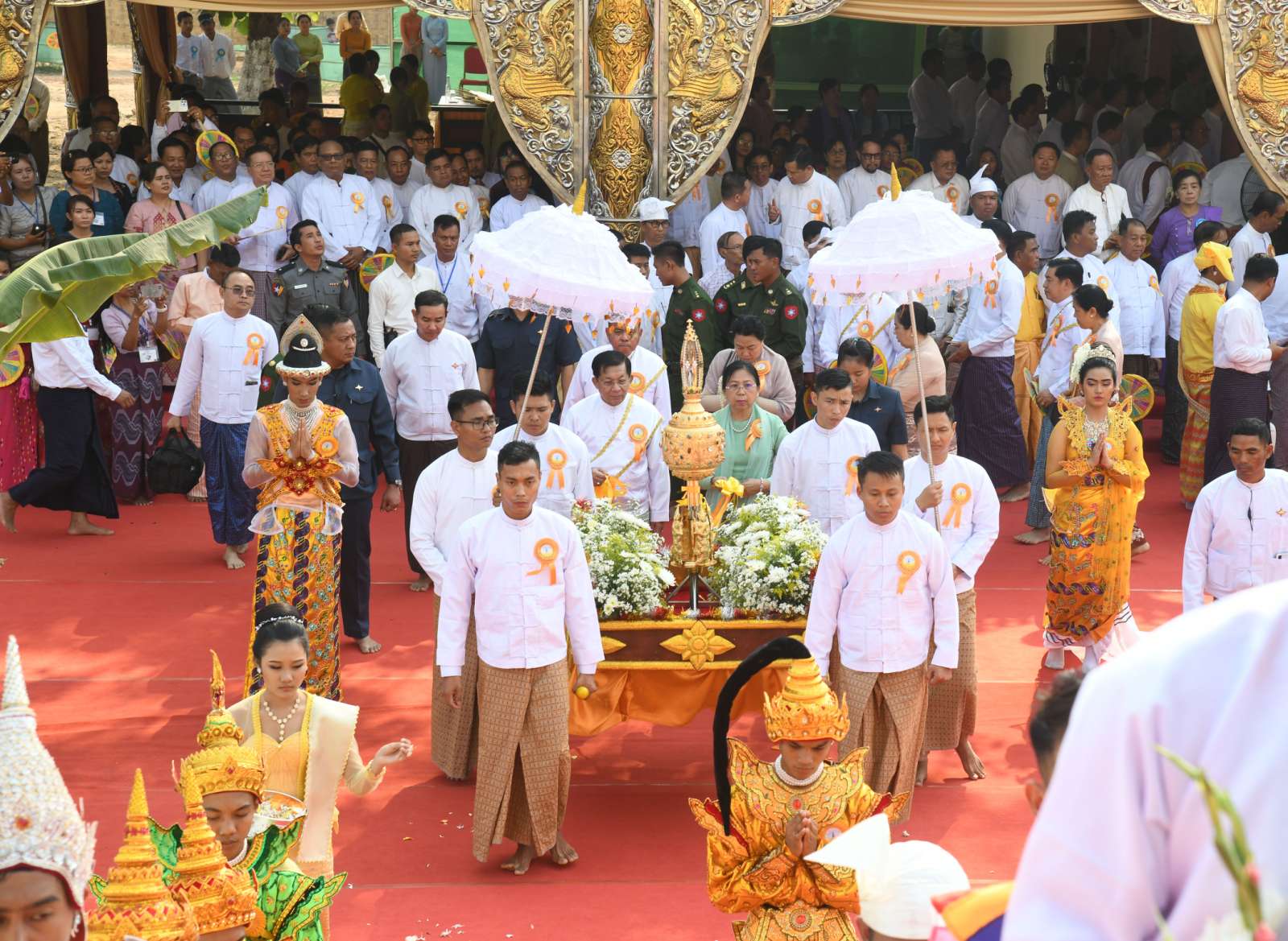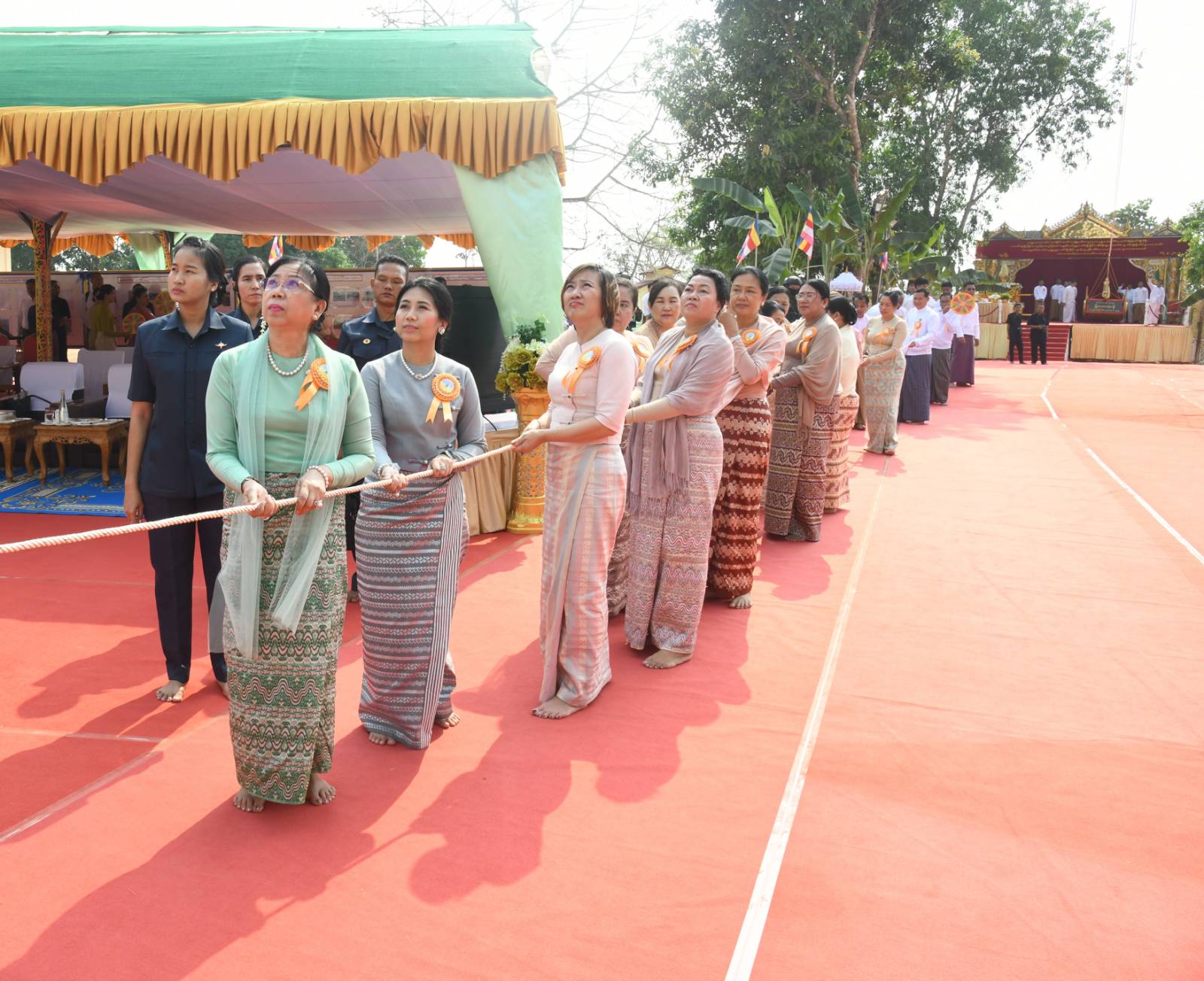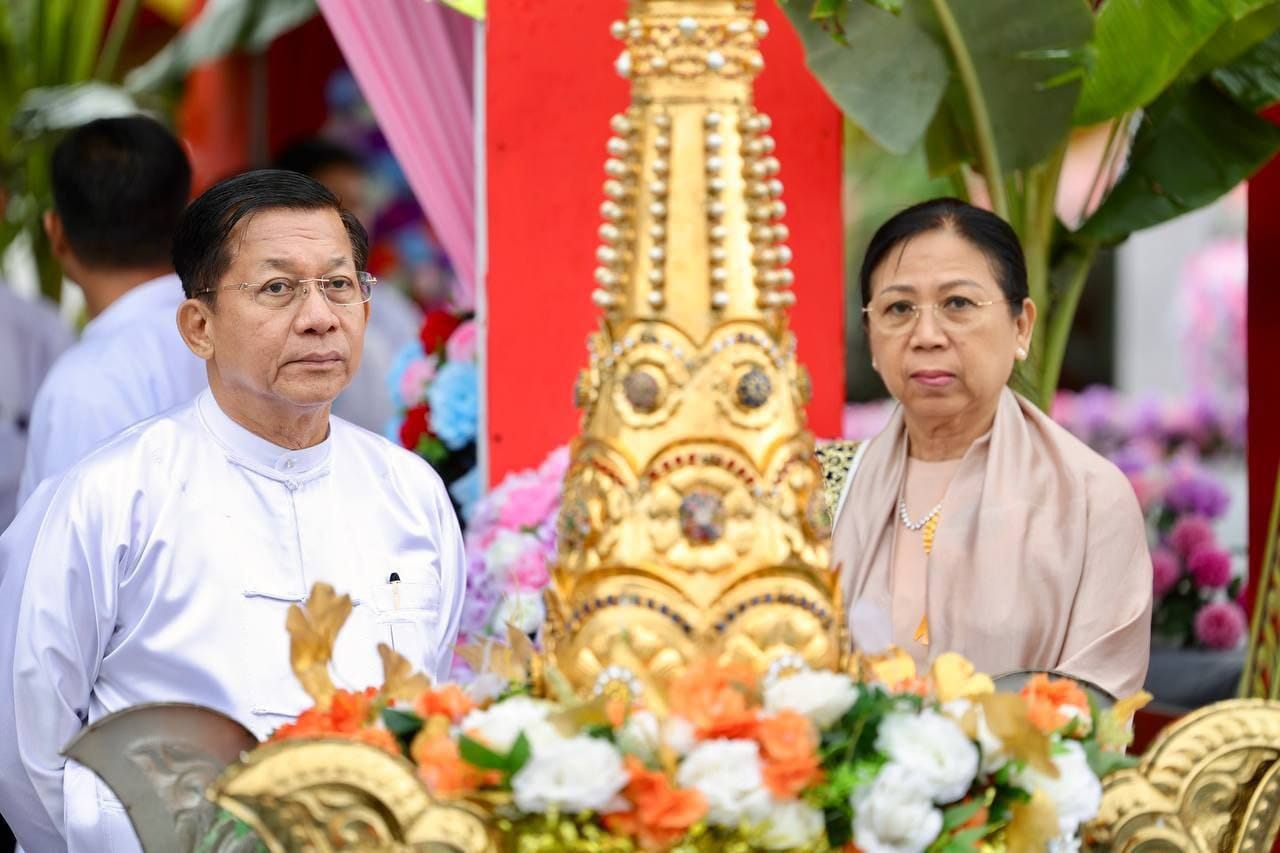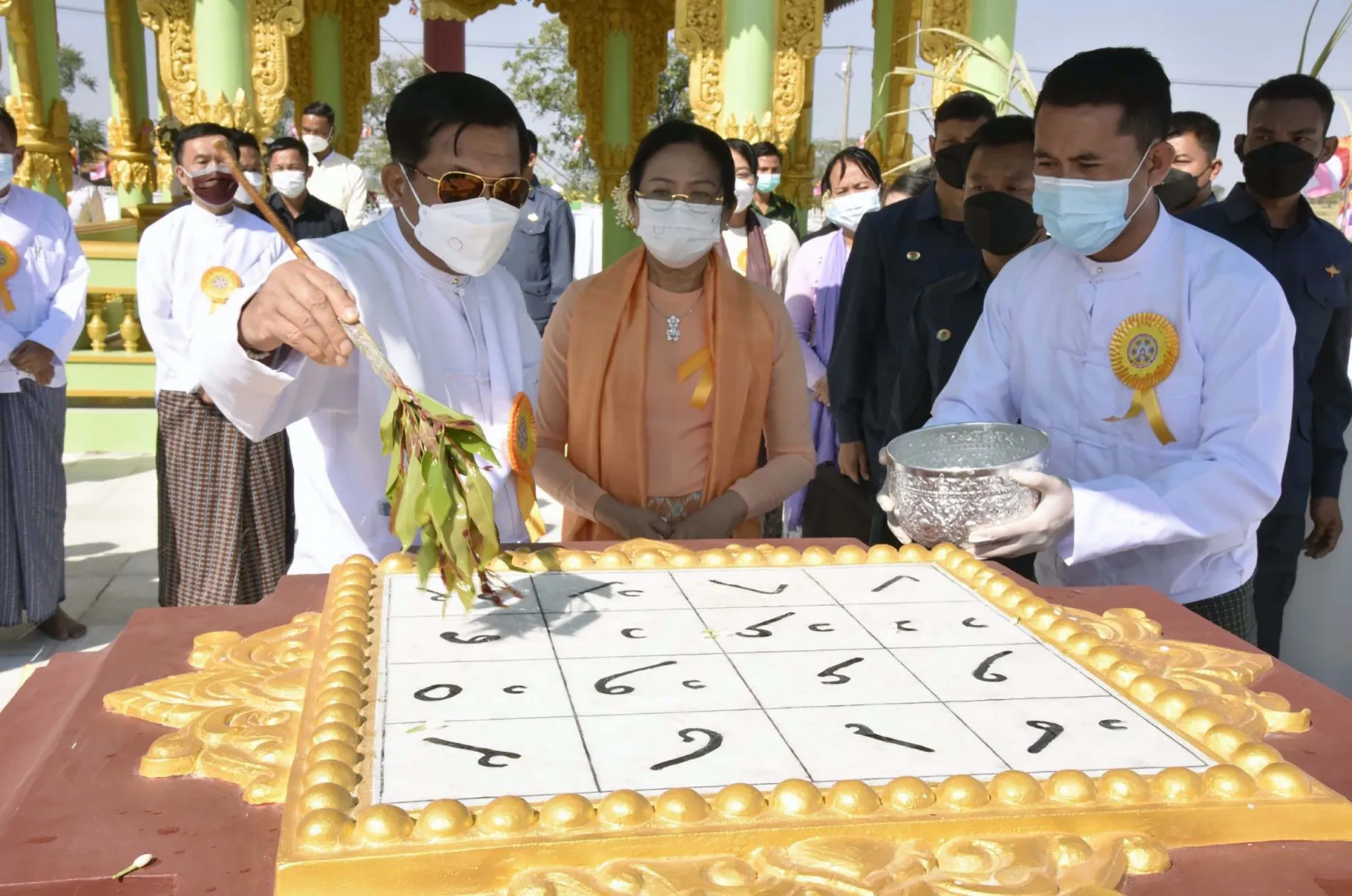Junta boss Min Aung Hlaing’s latest effort to seek divine blessings failed on Sunday when his regime lost control of one more town in western Myanmar’s Rakhine State.
Min Aung Hlaing and his family were in Bago on Sunday, reconsecrating the ancient Kyaik Pannaya pagoda in the town. Bago was the capital of the Mon kingdom of Hanthawaddy during the 13th-16th centuries. The pagoda was reportedly built by Mon kings over 1,000 years ago.
At the ceremony, Min Aung Hlaing struck a pagoda bell nine times, a sign that he is practicing yadaya—Burmese magic rituals aimed at averting misfortune. The number nine is considered auspicious in Burmese numerology, and is a talisman of Myanmar generals.
But Min Aung Hlaing’s yadaya appeared to be no match for the Arakan Army (AA)—a Rakhine State-based ethnic armed group that has been attacking the regime in the western Myanmar state since November last year—as it seized Rathedaung town the same day, after occupying Pauktaw, Ponnagyun, Mrauk-U, Minbya, Myebon, Ramree, Kyauktaw and Taung Pyo Letwe towns, as well as Paletwa town in Chin State.

Min Aung Hlaing’s obsession with the reconsecration of pagodas stems from his desire to win the country’s presidency. He reconsecrated Bagan’s 12th-century Htilominlo Temple in February 2020 ahead of the election in November that year. Traditionally, it is believed that rulers who make offerings at the pagoda will receive divine blessings and enjoy long reigns.
He also had a colossal Buddha statue, touted as the world’s tallest sitting Buddha, built in Naypyitaw. The Maravijaya Buddha statue’s attributes are closely associated with the number nine. The name Maravijaya means “to conquer Mara”, or dangers.

In February 2022, as the armed revolt against his regime intensified, Min Aung Hlaing reconsecrated a village pagoda in Pwintbyu Township, which is just 20 km from Minbu Town in Magwe Region, where he was born. He changed the name of the pagoda from Thet Thar Pantaung to Setkkyar Pantaung, and his family joined the reconsecration ceremony.
He also had a magic square—a specific arrangement of numbers, Burmese letters and images—carved on the precinct of the pagoda, aimed at averting opposition and threats to one’s life.
As the devastating Cyclone Mocha was bearing down on Rakhine State in May 2023, the junta boss was busy consecrating a pagoda in Kengtung in eastern Shan State.

The pagoda was built by Min Aung Hlaing’s mentor Buddhist monk U Kovida, who is known for his vow of silence. Renowned as a skilled astrologer and occult practitioner, the monk is believed to be the general’s astrological adviser.
Shortly after the coup, the monk was accused of advising Min Aung Hlaing to order security forces to shoot protesters in the head. Most of the anti-regime protesters killed in the early days of the junta crackdown had bullet wounds to the head.
While the Myanmar military was suffering humiliating defeats in northern Shan State late last year, Min Aung Hlaing reconsecrated two ancient pagodas in Naypyitaw on Jan. 2 and 3 instead of overseeing operations.

Min Aung Hlaing gained some breathing space when China brokered a ceasefire between the regime and ethnic armies in northern Shan State in mid-January—something he probably saw as a sign that his yadaya worked. So, he reconsecrated a pagoda in Bago amid the intense fighting in Rakhine.
Even military supporters have been mockingly calling Min Aung Hlaing “Phaya Daga”—a Burmese term for someone who has a pagoda built. They have even called on him to step down following defeats in northern Shan State.
Back when he was a young officer in the Myanmar military, Min Aung Hlaing carried a small Buddha figurine in his bag while on the front line, hoping that it would ward off any harm. He has barely demonstrated any ability to manage Myanmar since he recklessly staged a coup in 2021. So, little wonder he is seeking divine blessings as he is unable to govern the country himself.

















